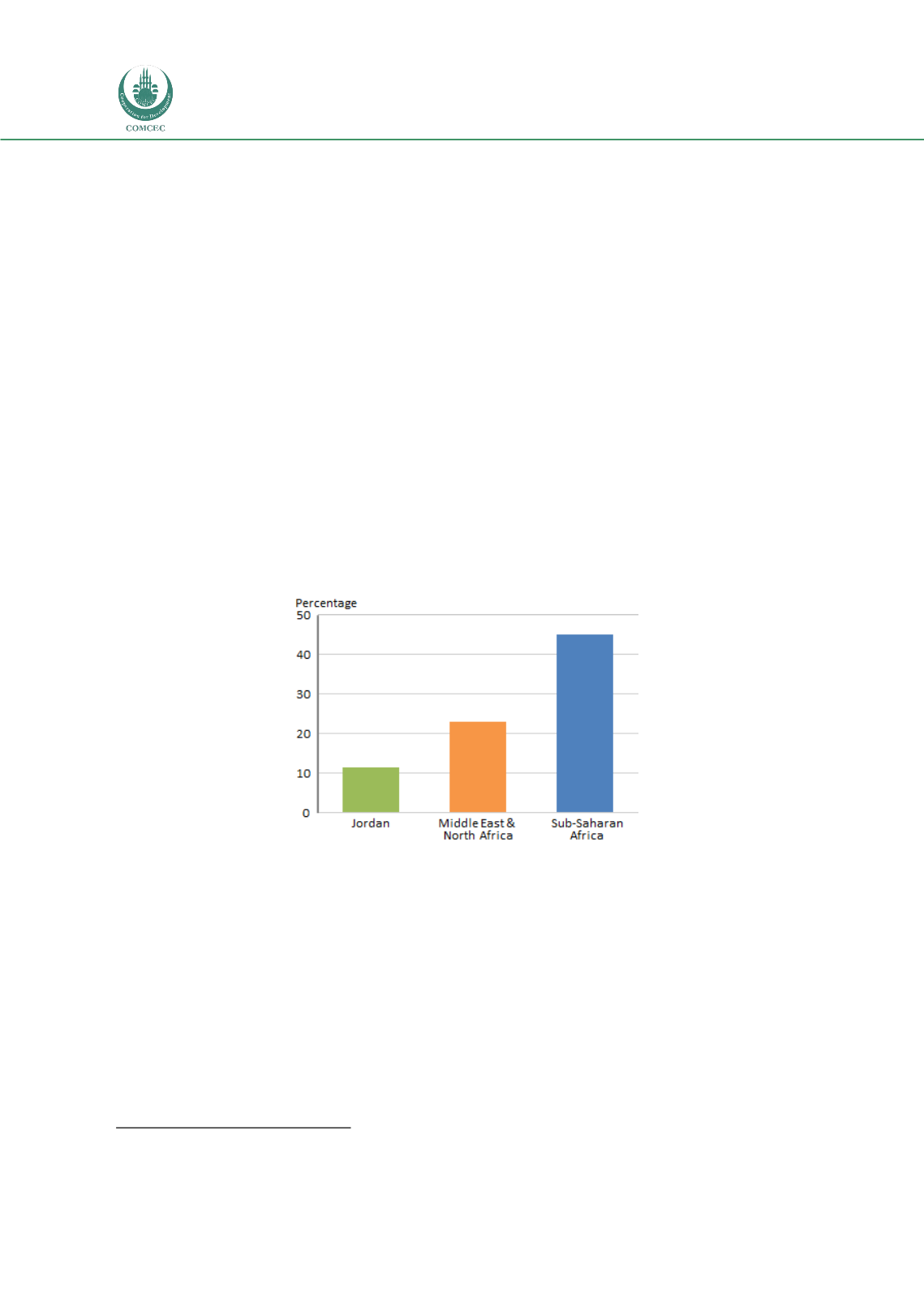

Facilitating Smallholder Farmers’ Market Access
In the OIC Member Countries
108
Sustainability
Agriculture has never been a large component of the Jordanian economy.: The country has
limited resources to devote to agriculture. Just over 11 percent of Jordan’s land is arable,
which is only half of the average share of arable land in all developing countries in MENA
(Figure 64). Roughly 45 percent of land in SSA’s developing countries is arable.
Water is limited as well. Jordan’s renewable domestic sources of water work out to about
110 cubic meters per capita per year, whereas the average across MENA’s other water-
constrained developing countries is six times that amount, and freshwater is 40 times
more plentiful in developing SSA
(Figure 65).
By adopting a set of policies that encouraged farmers to switch to crops other than wheat,
Jordan was able to stabilize its freshwater use at lower levels
(Figure 66), although
agriculture remains the largest user of water in the country. Climate models suggest that
Jordan will become hotter and drier, so finding more efficient ways to use water in rural
areas will remain a policy priority.
186
186
Verner et al. (2013).
FIGURE 64: ARABLE LAND AS A SHARE OF TOTAL LAND IN JORDAN, THE
MIDDLE EAST AND NORTH AFRICA, AND SUB-SAHARAN AFRICA, 2011
Source:
FAOSTAT (FAO 2014).

















